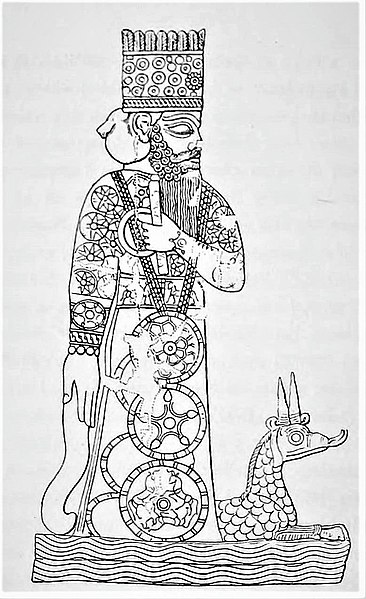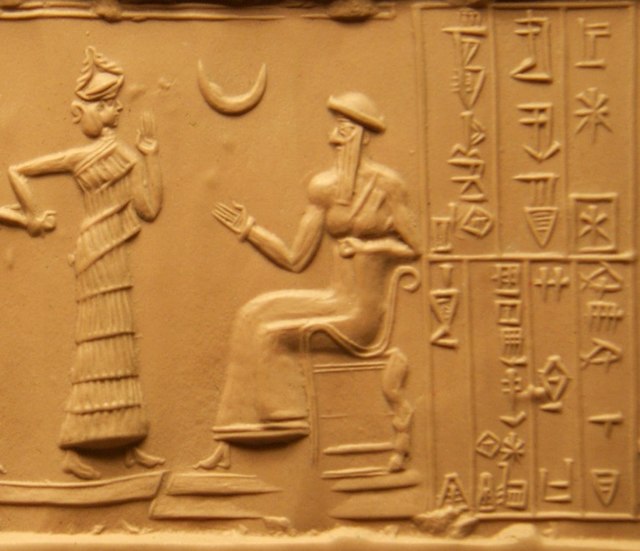Ancient Mesopotamian religion
Mesopotamian religion refers to the religious beliefs and practices of the civilizations of ancient Mesopotamia, particularly Sumer, Akkad, Assyria and Babylonia between circa 6000 BC and 400 AD. The religious development of Mesopotamia and Mesopotamian culture in general, especially in the south, were not particularly influenced by the movements of the various peoples into and throughout the area. Rather, Mesopotamian religion was a consistent and coherent tradition, which adapted to the internal needs of its adherents over millennia of development.
The god Marduk and his dragon Mušḫuššu
The "Burney Relief", which is speculated to represent either Ishtar or her older sister Ereshkigal (c. 19th or 18th century BCE)
Impression of the cylinder seal of Ḫašḫamer, ensi. The seated figure is probably king Ur-Nammu, bestowing the governorship on Ḫašḫamer, who is led before him by the goddess Lamma. Nanna himself is indicated in the form of a crescent (c. 2100 BCE)
Ancient near eastern cosmology
Ancient near eastern (ANE) cosmology refers to the plurality of cosmological beliefs in the Ancient Near East from the 4th millennium BC to the formation of the Macedonian Empire by Alexander the Great in the second half of the 1st millennium BC. This system of cosmology went on to have a profound influence on views in Egyptian cosmology, early Greek cosmology, later Jewish cosmology, patristic cosmology, and Islamic cosmology. Until the modern era, variations of ancient near eastern cosmology survived with Hellenistic cosmology as the main competing system.
Mesopotamia's image of the world, following the path Gilgamesh takes in the Epic of Gilgamesh
Sun God Tablet
Mosaic of Alexander the Great from Pompei






